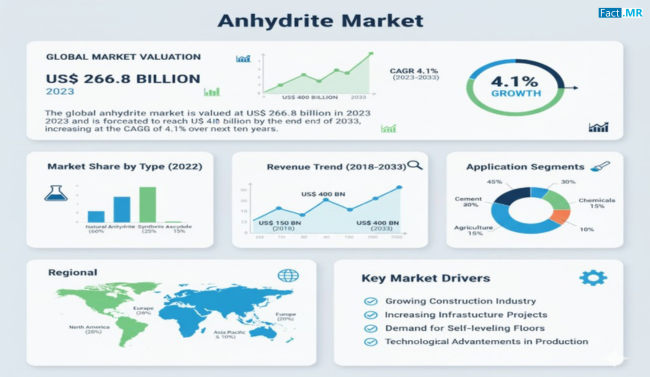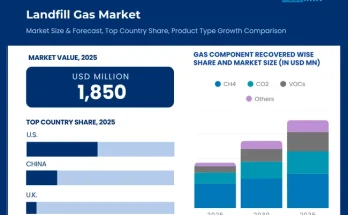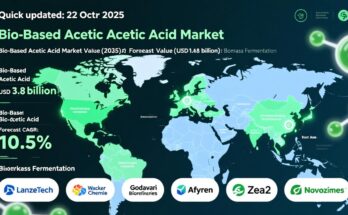Anhydrite, also known as anhydrous calcium sulfate, has become an essential material across multiple industries due to its versatility and unique properties. With applications ranging from construction and soil treatment to fertilizers and drying agents, the global anhydrite market is witnessing steady growth. Its ability to serve as a low-cost, environmentally friendly alternative in various applications underscores its increasing industrial significance.
Market Overview:
Anhydrite is a naturally occurring mineral often found in evaporite deposits, dolomites, and limestone. Unlike gypsum, anhydrite lacks water in its crystallization, giving it distinct chemical and physical properties. It is widely used as a drying agent in plaster, paint, and varnish, and as a component in cement and construction materials. Additionally, its role in agriculture as a soil conditioner and fertilizer enhancer highlights its multifunctionality across sectors.
Regional Insights:
The Asia Pacific region is emerging as a significant consumer of anhydrite, driven by rapid urbanization, infrastructure development, and increased demand in agriculture. China, in particular, is seeing substantial growth in construction and self-leveling cement applications. North America, led by the United States, is also a key market due to large-scale production and utilization in construction, agriculture, and soil remediation. Europe, especially Germany, leverages anhydrite in construction and fertilizer production, aligning with sustainable industrial practices.
Key Trends & Forecast:
- Construction Industry Demand:Anhydrite is increasingly used in autoclaved aerated concrete (AAC), self-leveling cement, and flooring applications due to its strength, durability, and eco-friendly properties.
- Agricultural Applications:Used as a soil amendment, anhydrite helps neutralize contaminated soil and enrich sulfate and calcium content, enhancing crop productivity.
- Industrial & Drying Applications:It serves as a drying agent in plasters, paints, and varnishes, improving product performance and longevity.
- Sustainable Alternatives:Studies indicate that anhydrite-based materials can reduce carbon emissions compared to traditional cement, supporting green construction initiatives.
- Collaborations & Investments:Key industry players are expanding operations and investing in high-purity anhydrite production to meet growing demand and maintain competitive advantage.
Applications & End-Use Outlook:
Anhydrite is widely used across diverse applications:
- Construction:Essential for cement, plaster, flooring, and AAC production, contributing to structural integrity and sustainability.
- Agriculture:Acts as a fertilizer and soil conditioner, enriching calcium and sulfate content for improved crop yield.
- Industrial Products:Functions as a drying agent in paint, varnish, and other chemical applications.
- Food & Beverage:Compliant with food chemical standards, it is used in controlled applications within the food industry.
Challenges:
Despite its advantages, anhydrite faces certain limitations such as low solubility, hardness, and the presence of impurities like clay or salt. Price fluctuations and competition from alternative materials such as gypsum and cement can impact market growth. Limited awareness among end-users in some regions also poses a challenge to adoption.
Conclusion:
Anhydrite is a versatile mineral with applications spanning construction, agriculture, and industrial products. Its ability to enhance soil quality, support sustainable construction, and serve as a drying agent makes it a valuable material in multiple sectors. As demand for environmentally friendly and high-performance materials grows, companies investing in innovative applications and high-purity production of anhydrite are poised to capitalize on the expanding global market.
Browse Full Report – https://www.factmr.com/report/anhydrite-market



